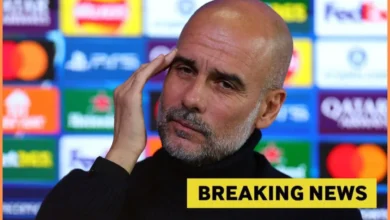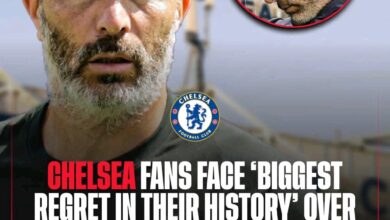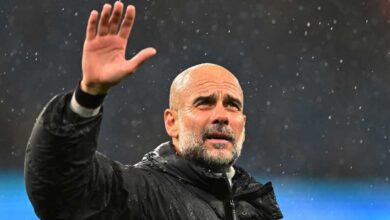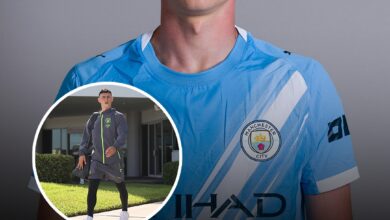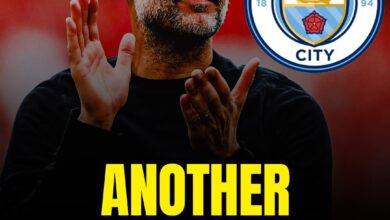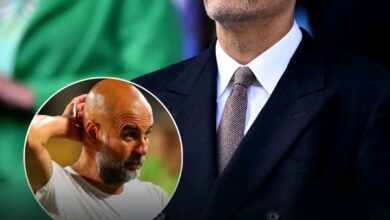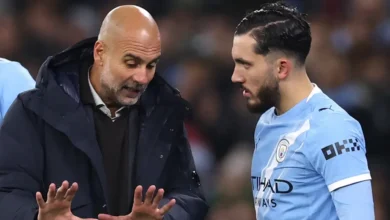Rodrygo signs, Sesko in, wonderkid deal, five exits – Arsenal best case transfer window scenario

As the summer transfer window prepares to swing open its doors once again, Arsenal Football Club finds itself at a pivotal crossroads in its modern history. Under the astute leadership of Mikel Arteta, the Gunners have transformed from a club languishing in mid-table mediocrity to genuine title contenders, yet the ultimate prize continues to elude their grasp. Three consecutive runner-up finishes in the Premier League, coupled with a commendable Champions League semi-final appearance this season, have established Arsenal as a formidable force in both domestic and European competitions. However, these near-misses have also highlighted the fine margins that separate good from great, success from disappointment.
The upcoming transfer window, which officially reopens on Monday, represents more than just an opportunity for squad enhancement – it embodies Arsenal’s chance to bridge the gap between ambition and achievement. Football.london’s comprehensive analysis suggests that the North London club is actively pursuing reinforcements across five key positions: goalkeeper, defender, midfielder, striker, and potentially a wide forward. This multi-faceted approach demonstrates the club’s commitment to addressing every aspect of their squad depth and quality.
The urgency of this summer’s business cannot be overstated. While Arsenal remained inactive during the initial ten-day window period designed for Club World Cup participants, their Premier League rivals seized the initiative. Liverpool, Manchester City, Chelsea, and Manchester United all made strategic acquisitions, leaving the Gunners temporarily behind in the arms race that defines modern football’s competitive landscape. This delay, however, may prove fortuitous if it allows Arsenal to conduct their business with increased precision and strategic clarity.
The goalkeeping position appears to be the most advanced in terms of completion, with Kepa Arrizabalaga emerging as the frontrunner to don Arsenal’s gloves. The Spanish international’s potential £5 million move from London rivals Chelsea represents one of the most intriguing value propositions in modern transfer history. To contextualize this figure, Chelsea originally invested £71 million to secure Kepa’s services in 2018, making him the world’s most expensive goalkeeper at the time.
Kepa’s journey from record-breaking signing to bargain acquisition tells a fascinating story of football’s unforgiving nature and the fluctuating values that define player markets. Despite facing criticism during certain periods of his Chelsea tenure, the Spanish goalkeeper possesses undeniable technical qualities and experience at the highest level of European football. His distribution, which was often cited as one of his strongest attributes, aligns perfectly with Arsenal’s possession-based playing philosophy under Arteta.
The potential acquisition of Kepa would address several strategic concerns for Arsenal. Aaron Ramsdale’s inconsistent form last season raised questions about the club’s long-term goalkeeping stability, while backup options lacked the experience necessary for high-pressure situations. Kepa’s Champions League experience, including his participation in major finals, provides Arsenal with proven pedigree between the posts. Moreover, his familiarity with the Premier League environment eliminates the adaptation period often required for international signings.
From a financial perspective, the deal represents astute business management. Arsenal would acquire a goalkeeper with significant big-match experience at a fraction of his original cost, while Chelsea would recoup some investment in a player who no longer fits their first-team plans. This type of value-driven transfer activity exemplifies the intelligent approach that has characterized Arsenal’s recent transfer strategy under the stewardship of sporting director Andrea Berta.
The midfield reinforcement appears equally advanced, with Martin Zubimendi of Real Sociedad emerging as Arsenal’s primary target. The £51 million valuation reflects the premium associated with acquiring players from La Liga’s upper echelons, but Zubimendi’s profile suggests he could prove transformative for Arsenal’s tactical flexibility.
Zubimendi’s technical profile aligns seamlessly with Arsenal’s evolutionary trajectory under Arteta. The Spanish midfielder’s ability to operate as both a deep-lying playmaker and a more advanced creative force provides tactical versatility that modern football demands. His experience in European competitions with Real Sociedad demonstrates his capacity to perform under pressure, while his age profile suggests he could serve as a cornerstone of Arsenal’s midfield for several seasons.
The reported late interest from Real Madrid actually validates Arsenal’s assessment of Zubimendi’s quality. When European giants circle a player, it typically indicates exceptional talent and potential. The fact that Arsenal appears to have won this particular battle speaks to their growing attractiveness as a destination for ambitious players seeking regular first-team football and involvement in major competitions.
Zubimendi’s potential arrival would address one of Arsenal’s most pressing tactical needs. The club has occasionally struggled with creative consistency from midfield, particularly in matches where opponents employ low defensive blocks. His passing range and ability to find space between lines could prove crucial in unlocking stubborn defensive setups that have historically troubled Arsenal.
The financial commitment required for Zubimendi’s signature also reflects Arsenal’s serious intent regarding their title ambitions. The club’s willingness to invest significantly in midfield reinforcement demonstrates recognition that sustainable success requires depth and quality across all positions, not just in attacking areas where fans typically focus their attention.
Perhaps no position generates more passionate debate among Arsenal supporters than the striker role. The club’s failure to secure a proven goalscorer in the previous two transfer windows has become a source of significant frustration, particularly given the fine margins that separated them from Premier League glory. This summer’s striker pursuit appears to center on two distinctly different profiles: Benjamin Sesko and Viktor Gyokeres.
Benjamin Sesko represents the long-term vision that Arsenal has embraced under Arteta’s leadership. At just 22 years of age, the Slovenian international possesses the physical attributes and technical skills that suggest he could develop into one of Europe’s premier strikers. His experience in top-level European competition provides confidence that he can adapt to the Premier League’s intensity, while his age profile aligns with Arsenal’s strategy of building around young, ambitious players.
The financial implications of securing Sesko would likely be substantial, given his age, potential, and the premium associated with acquiring players from successful European clubs. However, this investment could prove prescient if Sesko fulfills his considerable potential. Arsenal’s recent history with young acquisitions like Gabriel Martinelli and William Saliba demonstrates the club’s ability to nurture talent and maximize player development.
Viktor Gyokeres presents a contrasting proposition – immediate impact versus long-term potential. The Swedish striker’s goal-scoring record in Portuguese football has been nothing short of sensational, establishing him as one of Europe’s most prolific marksmen. His physicality and finishing ability suggest he could translate his success to the Premier League environment, while his age means Arsenal would acquire a player entering his prime years.
The debate between Sesko and Gyokeres encapsulates broader philosophical questions about Arsenal’s transfer strategy. Should they prioritize immediate impact to capitalize on their current competitive window, or invest in long-term potential that aligns with their sustainable development model? The answer may ultimately depend on external factors such as availability, competition from rival clubs, and the players’ personal preferences regarding their career development.
Arsenal’s defensive reinforcement strategy appears focused on youth and potential, with 19-year-old Jorrel Hato emerging as a primary target. The Ajax defender’s recognition as Eredivisie Young Player of the Season validates his exceptional talent and suggests he possesses the quality necessary to compete at Arsenal’s level.
Hato’s profile embodies several characteristics that have defined Arsenal’s successful recent acquisitions. His age provides long-term value and resale potential, while his experience in European competition with Ajax demonstrates his capacity to perform on significant stages. The Dutch development system’s reputation for producing technically gifted players also suggests Hato would adapt well to Arsenal’s possession-based approach.
The strategic logic behind pursuing Hato extends beyond immediate squad needs. Arsenal’s current defensive options, while solid, lack depth in certain areas. Ben White’s versatility has been crucial, but relying heavily on players operating outside their natural positions creates potential vulnerabilities. Hato’s arrival would provide additional options and allow for tactical flexibility without compromising defensive stability.
From a developmental perspective, Arsenal’s recent success with young defenders like William Saliba provides confidence in their ability to integrate promising talents. The club’s coaching structure and support systems have proven effective at maximizing player potential while managing the pressures associated with competing at the highest level.
The financial commitment required for Hato would likely be significant, reflecting both his potential and Ajax’s reputation for maximizing transfer fees. However, successful young defenders often appreciate rapidly in value, making such investments potentially profitable from both sporting and financial perspectives
Arsenal’s pursuit of wide forward reinforcement presents intriguing possibilities, with two distinctly different profiles under consideration. Nico Williams and Rodrygo represent contrasting approaches to squad enhancement, each offering unique advantages and challenges.
Nico Williams has established himself as one of Spain’s most exciting young talents, combining pace, direct running, and goal-scoring threat from wide positions. His performances for Athletic Bilbao have attracted attention from across Europe, while his age profile aligns with Arsenal’s preference for young, developing players. However, reports suggest his wage demands may present financial challenges, potentially pricing him outside Arsenal’s carefully managed salary structure.
Rodrygo presents a more ambitious but potentially transformative option. The Brazilian international’s experience with Real Madrid, including Champions League success, provides proven pedigree at the highest level of European football. His technical ability, versatility, and goal-scoring threat from wide positions could address multiple tactical needs within Arsenal’s system.
The potential availability of Rodrygo reflects Real Madrid’s squad management challenges rather than any deficiency in his performances. With an abundance of attacking talent, Los Blancos may be willing to sanction his departure for the right offer. For Arsenal, securing a player of Rodrygo’s caliber would represent a significant statement regarding their ambitions and attractiveness to elite talents.
The financial implications of pursuing Rodrygo would be substantial, likely requiring a fee that reflects his age, experience, and potential. However, such an investment could prove transformative for Arsenal’s tactical options and competitive prospects. The Brazilian’s ability to operate across multiple attacking positions would provide Arteta with enhanced flexibility in team selection and tactical approaches.
Arsenal’s approach to player departures has historically been criticized for failing to maximize financial returns. The club’s reluctance to operate as a selling entity, while philosophically admirable, has sometimes resulted in missed opportunities to generate funds for reinvestment. This summer presents opportunities to address this imbalance while strengthening the overall squad composition.
Fabio Vieira, Albert Sambi Lokonga, and Reiss Nelson represent the most obvious departure candidates, having spent the previous season on loan arrangements. Their limited involvement in Arsenal’s first-team plans suggests permanent departures could benefit all parties. However, their market values may not generate the substantial fees that would significantly impact Arsenal’s transfer budget.
Oleksandr Zinchenko and Jakub Kiwior present more complex cases. Both players possess qualities that could prove valuable to Arsenal, but their positions in the squad hierarchy remain uncertain. Zinchenko’s versatility has been valuable, but questions about his defensive capabilities in certain match situations persist. Kiwior’s adaptation to English football has been gradual, and his long-term prospects at Arsenal remain unclear.
Leandro Trossard emerges as potentially the most valuable departure candidate from a financial perspective. The Belgian international’s age profile and proven Premier League experience would likely attract interest from multiple clubs, potentially generating a significant transfer fee. However, his departure would need to be carefully managed to avoid weakening Arsenal’s attacking options.
The potential for creative exchange deals, particularly involving Portuguese clubs like Porto, could provide alternative solutions. Vieira’s loan experience with Porto could facilitate negotiations for their players, potentially including targets like Otavio. Such arrangements could provide mutual benefits while addressing specific squad needs for both clubs.
Arsenal’s transfer strategy operates within carefully defined financial parameters that reflect both Premier League regulations and the club’s sustainable development model. The potential investments in five new players would require substantial financial commitment, necessitating careful balance between ambition and fiscal responsibility.
The goalkeeper and midfielder acquisitions appear most advanced, with combined fees potentially exceeding £55 million. These investments reflect Arsenal’s recognition that midfield creativity and goalkeeping consistency represent foundational elements for sustained success. The financial commitment required demonstrates the club’s serious intent regarding their competitive ambitions.
The striker position represents the most significant financial decision facing Arsenal this summer. The choice between Sesko and Gyokeres involves not just tactical considerations but financial implications that could impact other transfer activities. A substantial investment in this position would necessitate careful management of remaining resources across other targeted areas.
Arsenal’s financial position has improved significantly following consecutive Champions League qualifications, providing increased revenue streams that support enhanced transfer activity. The club’s careful management of their wage structure also provides flexibility to accommodate new signings without compromising financial stability.
The timing of transfer activities becomes crucial when managing multiple significant acquisitions. Early completion of certain deals could provide tactical advantages in negotiations for remaining targets, while late-window activities might present value opportunities as selling clubs face deadline pressures.
Arteta’s tactical system has evolved significantly since his appointment, developing from a possession-based approach to a more dynamic, flexib






